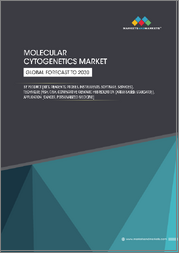
|
시장보고서
상품코드
1853432
컨시어지 의료 시장 : 서비스 모델, 회비 계층, 서비스 내용, 프로바이더 유형, 유통 채널별 - 세계 예측(2025-2032년)Concierge Medicine Market by Service Model, Membership Fee Tier, Service Offering, Provider Type, Distribution Channel - Global Forecast 2025-2032 |
||||||
컨시어지 의료 시장은 2032년까지 CAGR 11.00%로 490억 달러로 성장할 것으로 예측됩니다.
| 주요 시장 통계 | |
|---|---|
| 기준 연도 2024년 | 212억 5,000만 달러 |
| 추정 연도 2025년 | 235억 7,000만 달러 |
| 예측 연도 2032 | 490억 달러 |
| CAGR(%) | 11.00% |
개인화, 하이브리드 케어 모델, 의료 제공자의 전략적 중요성에 초점을 맞춘 컨시어지 의료의 현대적 역학을 확립하기 위한 간결한 소개
컨시어지 의료는 다양한 의료 제공 환경에서 의료 서비스 제공, 경험, 수익화 방식을 재정의하고 있습니다. 이 소개에서는 개인화된 진료, 가상과 대면 접점의 통합, 급성기 및 예방 중심의 코호트에 대한 결과 중시 등 오늘날의 변화를 뒷받침하는 핵심 주제에 대해 간략히 설명합니다. 주요 요약의 목적은 리더가 비즈니스 모델을 개선하고, 지불 여정을 최적화하며, 임상 및 상업적 회복력을 강화하기 위해 배포할 수 있는 전략적 신호와 실용적인 인텔리전스를 통합하는 것입니다.
수요 패턴이 진화함에 따라 이해관계자들은 회원제 수익 모델과 전통적인 서비스 수수료 사이의 절충점을 탐색하고 있습니다. 기술이 성숙해지면서 원격 모니터링, 모바일 헬스, 원격 상담을 대규모로 지원할 수 있게 되었고, 의료 서비스 제공자는 회원제의 가치를 편의성뿐만 아니라 측정 가능한 건강 관리로 확장할 수 있게 되었습니다. 규제와 지불자와의 관계는 여전히 중요하지만, 차별화된 서비스를 제공함으로써 환자 결과를 입증하는 제공자는 로열티와 장기적인 참여를 확보할 수 있는 입지가 점점 더 강화되고 있습니다.
이 소개에서는 컨시어지 의료에서 경영진의 의사결정을 안내하기 위해 서비스 디자인, 세분화, 지역 역학, 경쟁 포지셔닝, 실행 가능한 권장 사항과 같은 전략적 레버를 밝혀 이후 섹션의 프레임워크를 구성합니다. 프레임워크를 만들고 있습니다.
컨시어지 의료의 형성, 소비자 수요의 급증, 기술적 실현, 공급자의 비즈니스 모델 진화 등 변혁적 변화를 자세히 살펴봅니다.
컨시어지 의료를 둘러싼 환경은 소비자의 기대, 기술의 발전, 그리고 전통적인 의료 제공에 대한 구조적 압력으로 인해 크게 변화하고 있습니다. 편의성, 연속성, 적극적 건강 관리에 대한 환자들의 선호도가 높아짐에 따라 당일 접속, 맞춤형 케어 플랜, 통합된 디지털 접점에 대한 기대가 높아지고 있습니다. 동시에 원격의료 플랫폼, 원격 모니터링, 환자 참여 도구의 발전으로 전통적인 진료소의 벽을 넘어 종단적 진료를 제공하기 위한 마찰이 줄어들고, 의료 서비스 제공자는 새로운 회원 제안과 서비스 번들을 시험해 볼 수 있게 되었습니다.
또한, 여러 전문 클리닉이나 그룹 클리닉은 컨시어지 같은 기능을 도입해 서비스를 차별화하는 반면, 단독 클리닉은 틈새 포지셔닝을 다듬어 환자 충성도를 유지하기 위해 노력하면서 경쟁 역학이 심화되고 있습니다. 의료 보상 모델과 규제 지침은 하이브리드 의료에 대응하기 위해 단계적으로 변화하고 있으며, 의료 서비스 제공자는 업무 워크플로우와 데이터 거버넌스 프레임워크를 재검토해야 합니다. 의사와 임상팀은 지속가능한 스케줄과 높은 가치의 진료에 상응하는 보상 체계를 요구하고 있습니다.
이러한 변화의 흐름을 종합하면, 통합된 치료 경로, 견고한 디지털 인프라, 결과에 초점을 맞춘 가치 제안으로 전략적 방향 전환이 필요합니다. 원활한 환자 경험, 측정 가능한 임상 결과, 확장 가능한 운영 모델을 우선시하는 리더는 성장과 경쟁 우위를 확보하는 데 있어 유리한 고지를 점할 수 있을 것으로 보입니다.
2025년 미국 관세 변경이 전체 컨시어지 의료 서비스 제공자의 조달, 기기 가용성, 비즈니스 탄력성에 미치는 누적 영향 분석
2025년 관세 및 무역 정책 발전의 누적적 영향은 컨시어지 의료 생태계의 공급자와 공급업체에 새로운 비즈니스 고려 사항을 도입했습니다. 원격 모니터링 및 영상 진단 서비스를 지원하는 의료기기, 진단기기, 디지털 하드웨어의 공급망은 관세에 따라 조달 경제성이 달라지기 때문에 비용 압박과 리드타임의 변동에 노출되어 있습니다. 이러한 움직임으로 인해 의료 서비스 제공자 네트워크와 클리닉 관리자는 조달 전략을 재검토하고, 공급업체와의 관계를 다양화하며, 중요한 진단 및 모니터링 자산의 재고 관리 우선순위를 정해야 하는 상황에 직면해 있습니다.
또한, 수입 의약품, 특수 진단 시약, 소모품의 가격 및 가용성에도 다양한 영향을 미치고 있으며, 진단 서비스 및 만성질환 관리 경로에 다운스트림 영향을 미치고 있습니다. 이에 반해 일부 의료 서비스 제공자는 공급 안정성을 위해 국내 공급업체 및 지역 유통 파트너에 대한 의존도를 높이고 있습니다. 동시에 예산 제약과 마진에 대한 민감성으로 인해 물리적 인프라에 대한 의존도를 낮추는 원격진료 플랫폼, 원격 환자 모니터링 솔루션 등 소프트웨어 중심의 효율화 채택이 가속화되고 있습니다.
전반적으로, 2025년 관세 환경은 탄력적인 조달 관행, 민첩한 공급업체 관리, 돌발상황에 대한 대응 계획의 중요성을 강조하고 있습니다. 공급망 리스크를 적극적으로 평가하고, 대체 조달을 가능하게 하는 상호운용성에 투자하고, 마진을 보호하기 위해 계약 조건을 조정하는 공급자는 혼란을 완화하고 환자를 위한 서비스 연속성을 유지할 수 있습니다.
서비스 모델, 회비 등급, 다양한 서비스 내용, 공급자 유형, 유통 채널에 걸친 종합적인 세분화 인사이트이 전략적 선택을 형성합니다.
시장 세분화에 대한 미묘한 이해는 서비스 모델, 요금 계층, 서비스 내용, 공급자 유형, 판매 채널이 어떻게 상호 작용하고 가치 제안과 운영 우선순위를 형성하는지를 명확히 합니다. 서비스 모델에 따라 의료 서비스 제공자는 회원제 연속성과 에피소드 케어 제공이 결합된 하이브리드 모델을 통해 보다 유연한 수익원을 확보하고 다양한 환자에게 도달할 수 있는 반면, 전통적인 모델에서는 사무실에서의 직접적 연속성과 개인화된 대인관계에 중점을 둡니다. 라는 뚜렷한 패턴으로 분류됩니다. 회원 요금 체계에 따라, 고가 요금 체계는 풍부한 접근성과 맞춤형 케어 플랜에 중점을 두고, 중가 요금 체계는 합리적인 가격과 높은 접근성의 균형을 맞추고, 저가 요금 체계는 컨시어지의 핵심 혜택을 보다 광범위한 환자층으로 확대하는 모델입니다.
목차
제1장 서문
제2장 조사 방법
제3장 주요 요약
제4장 시장 개요
제5장 시장 인사이트
제6장 미국 관세의 누적 영향 2025
제7장 AI의 누적 영향 2025
제8장 컨시어지 의료 시장 : 서비스 모델별
- 하이브리드 모델
- 전통적인 모델
제9장 컨시어지 의료 시장 : 회원 요금 계층별
- 고액 요금층
- 저액 요금층
- 중액 요금층
제10장 컨시어지 의료 시장 : 서비스 제공별
- 만성질환 관리
- 암 팔로업
- 심혈관 관리
- 당뇨병 관리
- 진단
- 영상 서비스
- 실험실 테스트
- 예방 케어
- 연차 건강 진단
- 건강 진단
- 예방 접종
- 웰니스 서비스
- 피트니스 플래닝
- 정신건강 상담
- 대면 테라피
- 원격 요법
- 영양 상담
제11장 컨시어지 의료 시장 : 프로바이더 유형별
- 그룹 연습
- 종합 클리닉
- 솔로 프랙티셔너
제12장 컨시어지 의료 시장 : 유통 채널별
- 직접 방문
- 통합형
- 클리닉 방문과 원격의료
- 왕진과 원격의료
- 가상
- 모바일 헬스 앱
- 질병 관리 앱
- 건강 관리 앱
- 원격 모니터링
- 원격진료
- 모바일 헬스 앱
제13장 컨시어지 의료 시장 : 지역별
- 아메리카
- 북미
- 라틴아메리카
- 유럽, 중동 및 아프리카
- 유럽
- 중동
- 아프리카
- 아시아태평양
제14장 컨시어지 의료 시장 : 그룹별
- ASEAN
- GCC
- EU
- BRICS
- G7
- NATO
제15장 컨시어지 의료 시장 : 국가별
- 미국
- 캐나다
- 멕시코
- 브라질
- 영국
- 독일
- 프랑스
- 러시아
- 이탈리아
- 스페인
- 중국
- 인도
- 일본
- 호주
- 한국
제16장 경쟁 구도
- 시장 점유율 분석, 2024
- FPNV 포지셔닝 매트릭스, 2024
- 경쟁 분석
- 1Life Healthcare, Inc.
- MDVIP, LLC
- SignatureMD, LLC
- Castle Connolly Private Health Partners, LLC
- Concierge Choice Physicians, LLC
- Crossover Health, Inc.
- Parsley Health, Inc.
- PinnacleCare, LLC
- Elite Medical Group, Inc.
- Executive Health Group, Inc.
The Concierge Medicine Market is projected to grow by USD 49.00 billion at a CAGR of 11.00% by 2032.
| KEY MARKET STATISTICS | |
|---|---|
| Base Year [2024] | USD 21.25 billion |
| Estimated Year [2025] | USD 23.57 billion |
| Forecast Year [2032] | USD 49.00 billion |
| CAGR (%) | 11.00% |
A concise introduction that establishes the contemporary dynamics of concierge medicine, highlighting personalization, hybrid care models, and strategic implications for providers
Concierge medicine is redefining how care is delivered, experienced, and monetized across diverse provider settings. This introduction outlines the core themes that underpin contemporary shifts: personalization of care, integration of virtual and in-person touchpoints, and a pronounced focus on outcomes for high-acuity and prevention-oriented cohorts. It establishes the purpose of the executive summary, which is to synthesize strategic signals and practical intelligence that leaders can deploy to refine business models, optimize patient journeys, and strengthen clinical and commercial resilience.
As demand patterns evolve, stakeholders are navigating trade-offs between membership-based revenue models and traditional fee-for-service arrangements, while also experimenting with hybrid approaches that blend continuous engagement with episodic care. Technology has matured to support remote monitoring, mobile health, and teleconsultation at scale, enabling providers to expand the perceived value of membership beyond convenience to measurable health management. Regulatory considerations and payer relationships remain salient, yet providers that align differentiated service offerings with demonstrable patient outcomes are increasingly positioned to capture loyalty and long-term engagement.
This introduction frames the subsequent sections by highlighting the strategic levers-service design, segmentation, regional dynamics, competitive positioning, and actionable recommendations-that will be unpacked to guide executive decision-making in concierge medicine.
A detailed exploration of transformative shifts shaping concierge medicine including consumer demand surges, technological enabling, and evolving provider business models
The landscape of concierge medicine has experienced transformative shifts driven by consumer expectations, technological enabling, and structural pressures on traditional care delivery. Patient preferences for convenience, continuity, and proactive health management have elevated expectations for same-day access, tailored care plans, and integrated digital touchpoints. Concurrently, advances in telehealth platforms, remote monitoring, and patient engagement tools have reduced friction for delivering longitudinal care outside of conventional clinic walls, enabling providers to experiment with new membership propositions and service bundles.
In addition, competitive dynamics have intensified as multi-specialty clinics and group practices adopt concierge-like capabilities to differentiate offerings, while solo practitioners refine niche positioning to retain patient loyalty. Reimbursement models and regulatory guidance have shifted incrementally to accommodate hybrid delivery, prompting providers to reassess operational workflows and data governance frameworks. Workforce considerations are also reshaping delivery models; physicians and clinical teams seek sustainable schedules and compensation structures that align with high-touch, high-value care.
Taken together, these transformative shifts call for a strategic reorientation toward integrated care pathways, robust digital infrastructure, and outcome-focused value propositions. Leaders who prioritize seamless patient experiences, measurable clinical outcomes, and scalable operational models will be better placed to capture growth and sustain competitive advantage.
An analysis of the cumulative effects of United States tariff changes in 2025 on procurement, device availability, and operational resilience across concierge medicine providers
The cumulative impact of tariffs and trade policy developments in 2025 has introduced new operational considerations for providers and suppliers in the concierge medicine ecosystem. Supply chains for medical devices, diagnostic equipment, and digital hardware that underpin remote monitoring and imaging services are subject to cost pressures and lead-time variability as tariffs alter procurement economics. These dynamics have prompted provider networks and clinic administrators to revisit sourcing strategies, diversify vendor relationships, and prioritize inventory management for critical diagnostic and monitoring assets.
Moreover, the pricing and availability of imported pharmaceuticals, specialized diagnostic reagents, and consumables have been variably affected, with downstream implications for diagnostic services and chronic disease management pathways. In response, some providers have increased reliance on domestic suppliers or regional distribution partners to stabilize supply reliability. At the same time, budgetary constraints and margin sensitivity are accelerating adoption of software-driven efficiencies, such as teleconsultation platforms and remote patient monitoring solutions that reduce dependence on physical infrastructure.
Overall, the tariffs environment of 2025 has reinforced the importance of resilient procurement practices, agile vendor management, and contingency planning. Providers that proactively assess supply chain risk, invest in interoperability to enable alternative sourcing, and align contractual terms to protect margins will mitigate disruption and preserve service continuity for patients.
Comprehensive segmentation insights across service models, membership fee tiers, diversified service offerings, provider types, and distribution channels shaping strategic choices
A nuanced understanding of market segmentation reveals how service models, fee tiers, service offerings, provider types, and distribution channels interact to shape value propositions and operational priorities. Based on service model, providers fall into distinct patterns where hybrid models blend membership continuity with episodic care delivery, enabling more flexible revenue streams and broader patient reach, while traditional models retain a focus on direct, office-based continuity and personalized in-person relationships. Based on membership fee tier, offerings are calibrated across high fee tier propositions that emphasize white-glove access and bespoke care plans, mid fee tier options that balance affordability with elevated access, and low fee tier models that extend core concierge benefits to a wider patient base.
Based on service offering, the portfolio of care spans chronic disease management, diagnostics, preventive care, and wellness services. Chronic disease management is further differentiated by specialized pathways such as cancer follow up, cardiovascular management, and diabetes management, each requiring tailored clinical protocols and long-term monitoring. Diagnostics is expanded through imaging services and lab testing, which are essential for timely clinical decision-making. Preventive care encompasses annual physicals, health screenings, and immunizations, driving early detection and risk reduction. Wellness services integrate fitness planning, mental health counseling, and nutrition counseling, with mental health counseling offering both in-person therapy and teletherapy to increase access.
Based on provider type, delivery models vary across group practices, multi-specialty clinics, and solo practitioners, influencing scale, referral networks, and administrative capabilities. Based on distribution channel, care is delivered in person, through integrated approaches that combine clinic visits plus telehealth or house calls plus telehealth, and via virtual channels such as mobile health apps, remote monitoring, and teleconsultation. Mobile health apps themselves are segmented into disease management apps and wellness tracking apps, extending continuous engagement and data-driven personalization. Together, these segmentation axes define distinct strategic imperatives for product development, pricing, technology investment, and patient acquisition.
Key regional insights that compare adoption patterns, regulatory complexities, and technological readiness across the Americas, Europe Middle East & Africa, and Asia-Pacific
Regional dynamics continue to shape strategic priorities and operational models across the Americas, Europe, Middle East & Africa, and Asia-Pacific markets, each presenting distinct regulatory, payer, and adoption contexts that influence concierge medicine deployment. In the Americas, demand is driven by consumer willingness to pay for enhanced access, coupled with innovation in hybrid delivery models that integrate telehealth and home-based services. Regulatory frameworks and insurer relationships vary by jurisdiction, encouraging providers to prioritize compliance, outcomes tracking, and value-based partnerships to sustain longer-term engagement.
The Europe, Middle East & Africa region exhibits heterogeneity, with pockets of advanced integration of digital health in wealthier markets and ongoing capacity and access challenges in other jurisdictions. Providers in this region often navigate complex public-private interfaces and must tailor membership propositions to complement existing healthcare entitlements while highlighting convenience and specialized care. In contrast, the Asia-Pacific region demonstrates rapid technology adoption, with mobile-first strategies and remote monitoring scaling quickly in urban centers. Provider models in Asia-Pacific frequently emphasize platform-driven engagement and partnerships with regional health technology vendors to expand reach.
Across all regions, leaders must account for local regulatory nuances, workforce availability, and cultural expectations around continuity of care. Strategic regional playbooks that align service design, pricing, and distribution channels to local realities will enable more effective market entry and sustained patient loyalty.
Key company-level insights revealing how providers, specialty clinics, and new entrants differentiate through partnerships, technology investments, and care pathway optimization
Competitive dynamics in concierge medicine are shaped by a mix of legacy providers expanding into membership models, specialty clinics refining differentiated care pathways, and new entrants leveraging technology to scale virtual-first propositions. Established group practices and multi-specialty clinics are investing in infrastructure to support integrated care, prioritizing interoperability, centralized care coordination, and standardized clinical pathways to deliver consistent outcomes. Solo practitioners, meanwhile, often compete on personalized relationships and niche expertise, using selective technology integrations to amplify reach without diluting the intimacy of the care experience.
Strategic partnerships are increasingly important, with providers collaborating with diagnostic service vendors, telehealth platform companies, and remote monitoring suppliers to assemble comprehensive service bundles. These alliances allow providers to accelerate capability deployment while managing capital intensity, though they require robust contracting and data governance frameworks. In addition, a new wave of clinical service innovators focuses on chronic disease management programs that link continuous monitoring, algorithmic risk stratification, and proactive care interventions, aiming to demonstrate improved health metrics and enhanced patient satisfaction.
From a competitive standpoint, differentiation is achieved through a combination of service depth, technological maturity, and patient engagement strategies. Organizations that integrate cross-disciplinary teams, invest in clinician workflow optimization, and deliver measurable improvements in care experience will stand out in a crowded and evolving marketplace.
Practical, actionable recommendations for executive leaders to strengthen differentiation, operational resilience, and patient outcomes across concierge medicine delivery models
Industry leaders can pursue a set of actionable strategies to strengthen market positioning, enhance patient outcomes, and improve operational resilience. First, prioritize investment in interoperable digital platforms that support teleconsultation, remote monitoring, and mobile engagement, enabling seamless transitions between in-person and virtual encounters and enhancing continuity for chronic disease management programs. Second, adopt flexible membership pricing strategies that align with distinct fee tier expectations, offering modular service bundles that can be upsold or tailored to clinical need while preserving predictable revenue streams.
Third, develop procurement and vendor diversification plans to mitigate supply chain risks and manage the implications of changing trade policies. Fourth, build multidisciplinary care teams and standardized clinical pathways for high-impact service lines such as cardiovascular management and diabetes management, ensuring that clinicians are supported by decision-support tools and outcome measurement frameworks. Fifth, expand distribution channels by combining in-person access with integrated approaches-clinic visits plus telehealth or house calls plus telehealth-and robust virtual offerings, including disease management apps and teleconsultation, to meet patients where they are.
Finally, invest in regionalized go-to-market strategies that reflect local regulatory conditions and patient expectations. By sequencing these initiatives and measuring progress through clear KPIs, leaders can translate strategic intent into operational outcomes that drive patient loyalty and sustainable performance.
A transparent and practitioner-informed research methodology detailing interviews, secondary synthesis, segmentation frameworks, and triangulation techniques for robust analysis
The research methodology underpinning this analysis combined qualitative and quantitative approaches to ensure a robust and defensible evidence base. Primary research included structured interviews with provider executives, clinicians, and technical leaders across diverse practice types to capture real-world adoption patterns, operational challenges, and strategic priorities. Secondary research synthesized publicly available regulatory guidance, clinical practice standards, and technology capability descriptions to contextualize primary findings and validate thematic patterns.
The analytical framework segmented the market along five dimensions-service model, membership fee tier, service offering, provider type, and distribution channel-to explore how different configurations influence operational requirements and value propositions. Regional analysis incorporated regulatory, reimbursement, and cultural factors to explain geographic variation in adoption. Triangulation methods were applied to reconcile divergent data points and to surface high-confidence insights for strategic decision-making. Limitations are acknowledged where public disclosure is incomplete or where rapid technology change may alter certain operational assumptions, and sensitivity checks were applied to key qualitative inferences.
Overall, the methodology emphasizes transparency, triangulation, and practitioner-informed interpretation, ensuring that the conclusions drawn are actionable for executives navigating the evolving concierge medicine landscape.
A conclusive synthesis emphasizing how strategic alignment of digital, clinical, and commercial levers will determine success in the evolving concierge medicine landscape
In conclusion, concierge medicine is transitioning from a niche, relationship-driven model toward a more diverse ecosystem characterized by hybrid delivery, technology-enabled engagement, and differentiated service portfolios. The convergence of consumer expectations for convenience and personalization, advances in telehealth and remote monitoring, and evolving provider strategies has created an opportunity to reimagine continuity of care. Providers that strategically align membership tiers, expand diagnostics and chronic disease management capabilities, and integrate wellness services will better meet patient needs while sustaining operational viability.
Regional nuances, supply chain considerations, and competitive pressures underscore the need for tailored approaches that reflect local regulatory and cultural contexts. Leaders should prioritize investments in digital interoperability, multidisciplinary care teams, and outcome measurement to demonstrate value and build long-term trust. By adopting modular service designs, diversifying procurement, and leveraging integrated distribution channels, providers can both enhance patient experience and create defensible differentiation.
Ultimately, the path forward requires balancing clinical excellence with commercial discipline. Executives who translate these insights into concrete operational plans and who engage in ongoing measurement and iteration will be best positioned to lead in the evolving concierge medicine landscape.
Table of Contents
1. Preface
- 1.1. Objectives of the Study
- 1.2. Market Segmentation & Coverage
- 1.3. Years Considered for the Study
- 1.4. Currency & Pricing
- 1.5. Language
- 1.6. Stakeholders
2. Research Methodology
3. Executive Summary
4. Market Overview
5. Market Insights
- 5.1. Integration of AI-powered health monitoring wearables into VIP concierge care models to enable real-time patient insights
- 5.2. Expansion of international wellness retreats with embedded telehealth follow-up services for affluent concierge patients
- 5.3. Adoption of genomic and biomarker-based personalized preventive protocols within high-end concierge medicine programs
- 5.4. Partnerships between concierge practices and boutique mental health startups offering on-demand therapy and neurofeedback sessions
- 5.5. Implementation of direct primary care lanes integrated with chronic disease management platforms in exclusive clientele networks
- 5.6. Deployment of mobile phlebotomy and diagnostic labs to affluent homes for expedited test results in concierge medicine
- 5.7. Use of blockchain-secured patient records to enhance privacy and data interoperability for premium healthcare subscribers
- 5.8. Integration of luxury lifestyle coaching with nutrition genomics in a bundled concierge health membership for executives
6. Cumulative Impact of United States Tariffs 2025
7. Cumulative Impact of Artificial Intelligence 2025
8. Concierge Medicine Market, by Service Model
- 8.1. Hybrid Model
- 8.2. Traditional Model
9. Concierge Medicine Market, by Membership Fee Tier
- 9.1. High Fee Tier
- 9.2. Low Fee Tier
- 9.3. Mid Fee Tier
10. Concierge Medicine Market, by Service Offering
- 10.1. Chronic Disease Management
- 10.1.1. Cancer Follow Up
- 10.1.2. Cardiovascular Management
- 10.1.3. Diabetes Management
- 10.2. Diagnostics
- 10.2.1. Imaging Services
- 10.2.2. Lab Testing
- 10.3. Preventive Care
- 10.3.1. Annual Physicals
- 10.3.2. Health Screenings
- 10.3.3. Immunizations
- 10.4. Wellness Services
- 10.4.1. Fitness Planning
- 10.4.2. Mental Health Counseling
- 10.4.2.1. In Person Therapy
- 10.4.2.2. Teletherapy
- 10.4.3. Nutrition Counseling
11. Concierge Medicine Market, by Provider Type
- 11.1. Group Practice
- 11.2. Multi Specialty Clinic
- 11.3. Solo Practitioner
12. Concierge Medicine Market, by Distribution Channel
- 12.1. In Person
- 12.2. Integrated
- 12.2.1. Clinic Visits Plus Telehealth
- 12.2.2. House Calls Plus Telehealth
- 12.3. Virtual
- 12.3.1. Mobile Health Apps
- 12.3.1.1. Disease Management Apps
- 12.3.1.2. Wellness Tracking Apps
- 12.3.2. Remote Monitoring
- 12.3.3. Teleconsultation
- 12.3.1. Mobile Health Apps
13. Concierge Medicine Market, by Region
- 13.1. Americas
- 13.1.1. North America
- 13.1.2. Latin America
- 13.2. Europe, Middle East & Africa
- 13.2.1. Europe
- 13.2.2. Middle East
- 13.2.3. Africa
- 13.3. Asia-Pacific
14. Concierge Medicine Market, by Group
- 14.1. ASEAN
- 14.2. GCC
- 14.3. European Union
- 14.4. BRICS
- 14.5. G7
- 14.6. NATO
15. Concierge Medicine Market, by Country
- 15.1. United States
- 15.2. Canada
- 15.3. Mexico
- 15.4. Brazil
- 15.5. United Kingdom
- 15.6. Germany
- 15.7. France
- 15.8. Russia
- 15.9. Italy
- 15.10. Spain
- 15.11. China
- 15.12. India
- 15.13. Japan
- 15.14. Australia
- 15.15. South Korea
16. Competitive Landscape
- 16.1. Market Share Analysis, 2024
- 16.2. FPNV Positioning Matrix, 2024
- 16.3. Competitive Analysis
- 16.3.1. 1Life Healthcare, Inc.
- 16.3.2. MDVIP, LLC
- 16.3.3. SignatureMD, LLC
- 16.3.4. Castle Connolly Private Health Partners, LLC
- 16.3.5. Concierge Choice Physicians, LLC
- 16.3.6. Crossover Health, Inc.
- 16.3.7. Parsley Health, Inc.
- 16.3.8. PinnacleCare, LLC
- 16.3.9. Elite Medical Group, Inc.
- 16.3.10. Executive Health Group, Inc.



















